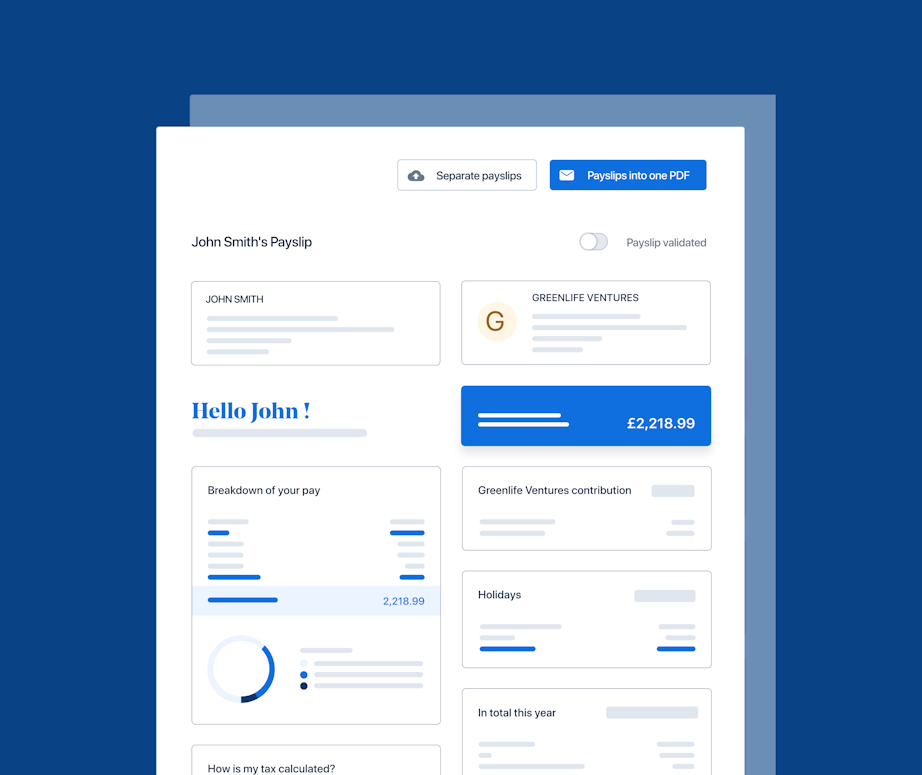Unwrapping the Concept of Flexible Working: A Guide for UK Businesses

The term ‘flexible working’ refers to different types of working arrangements.
It’s about how long an employee works, where, when and at what times they start and finish their job. In a nutshell, it refers to any kind of working pattern that might deviate from what we think of as ‘the norm’.
Up to this point it has been ‘the norm’ for employees and workers to work from 9 AM to 5 PM, for five days a week. But this structure is gradually fading into the background. The rise of technology, the recent pandemic, and the overall quest for greater work-life balance has pulled into focus a more adaptive approach to work.
Let’s discuss what flexible working really is, what it looks like practically in the workplace, and how it’s reshaping the future of the UK workforce.
What does flexible working mean in the UK?
As we touched on previously, conventional office hours and locations are quickly becoming a relic of the past. Modern working arrangements are about empowering employees and helping them to find a rhythm that suits their needs, as well as those of their business.
But what does working flexibly, or ‘flexi working’ as it’s called, look like at a practical level? The definition of flexible working is broad and encompasses everything from flexible start and finish times to part-time work, compressed hours, and even working from home. Whether it’s logging on at a local cafe, hot desking, or starting and finishing later, all these fall under the umbrella of flexibility.
The end game? That employees have the autonomy to tailor their working schedules around personal commitments so they can optimise work-life balance and tap into greater levels of productivity.
What’s an example of flexible work? 🤸♀️
Let’s say you have an employee named Sarah. Sarah is a graphic designer, and she
prefers to start her day early as this aligns with the hours when she feels most creative. She also has childcare responsibilities to manage throughout the day.
To help Sarah perform her best while prioritising her responsibilities and well-being, you could agree to a flexi-time schedule with her. This would allow Sarah to start her work day at 7:00 AM and finish by 3:00 PM so she can pick her children up from childcare or school and still have time to spend with them.
Each employee is unique and will have a different lifestyle or priorities to juggle, so this is one of many examples you can draw on.
And this leads perfectly to our next point…
What are the most common flexible working arrangements?
As we recently uncovered from our survey into the state of flexible working, there’s more than one way to do flexibility. To better explain what flexible working hours can look like, here are a few popular flexible-working arrangements.
Part-time work arrangements - are in place where employees are contracted to work less than traditional full-time hours. Pay and schedules are adjusted accordingly.
Job sharing - occurs when a full-time job gets split between two employees. Hours are ‘worked out’ or agreed between both parties.
Working from home - We know this one well from the pandemic. Under this arrangement, an employee spends all or part of the week working-from-home (WFH) or a different location.
Flexi-time - This refers to situations where employees can choose how they work outside their core hours, as set by their employer.
Compressed hours - refers to another flexible pattern where an employee covers their working hours across fewer working days.
Phased retirement - This set-up works well for those looking to ease into retirement. It involves reducing working hours over a period of time, and/or working part-time.
Flexible working: other examples
Aarush needs to start caring for his elderly mother. You agree with him that he can choose when to complete his core hours so he can attend to her needs at different intervals throughout the day.
Carol is a wheelchair user. The working-from-home, part-time arrangement you’ve settled on together allows her to better manage her disability so she can stay active in the workforce.
Kwasi is a single Dad juggling childcare responsibilities. The decision you’ve made with him to start and finish his work day early allows him to pick up his children from school at a reasonable hour so they can all spend time together in the evening.
Mahira has ADHD. She’s highly creative and finds she’s most productive in the evening. You agree with Mahira that she can start and finish later to take advantage of her peak productive hours.
What does the law say?
In July 2023, a new flexible working bill received royal assent here in the UK. In essence, this bill granted employees the right to request flexible working from day one of their employment. This is instead of having to wait 26 weeks to put forward a request.
This shift in legislation underscores the government's growing awareness of flexible working and its commitment to making it a fundamental right rather than just a supplementary one.
The benefits of embracing flexi working
The benefits of flexible working are numerous. For one, employees can better fit their work around their family life or other personal commitments. It also affords employees a greater degree of control and autonomy over their schedule. It can also cut down the time spent on stressful commutes and disruption due to unreliable public transport.
But there are several advantages employers should consider too. For one, it can broaden their talent pools to include non-local candidates as well as people who are unable to work full-time or traditional hours. In the eyes of the talent markets, this makes you a much more competitive and desirable employer to work for.
The disadvantages
While there are lots of advantages to flexible working, there are also some challenges. These come in the way of maintaining team cohesion, ensuring flexible options are accessible, and managing performance remotely. Addressing these concerns requires clear guidelines, regular check-ins, and leveraging technology to keep teams connected and aligned, all concerns which we address in our whitepaper on flexible working already mentioned above.
Getting started with flexible working in your business
If you’re an organisation that’s been operating traditionally, then transitioning to working flexibly might feel a little daunting. It’s important for HR leaders to remember that they don’t have to make the transition all at once.
In fact, dividing this kind of transformation progress into smaller ‘chunks’ or steps is one of the best and most realistic ways of getting started.
Here are a few initial steps you can take toward this goal:
Determine how feasible it is
Not all UK organisations will be suited to take on a fully flexible approach. For instance, it might be that some positions or functions need to be performed on site and during core business hours. Take stock of which roles and tasks can be adapted to work flexibly without compromising on core productivity or service delivery.
Outline some initial policies
Rome wasn’t built in a day. That goes for your flexible working policy too. But remember, a little progress is better than none at all. Start by sitting down with some key stakeholders to determine the ‘must haves’ for an initial policy you can pilot.
That could be putting in place a clear process for making flexible requests or what specific arrangements your business can or can’t cater to.
Foster a culture of trust and openness
Ultimately, flexibility all starts at the cultural level. Foster a culture of openness and trust, and you’ll find that leaders will more readily jump on board with these changes. Encourage open discussions about flexible working preferences and needs, ensuring that employees feel supported in their requests.
Use technology to your advantage
Finally, you can leverage digital tools and platforms, to manage work schedules, pay and different contract arrangements to make adopting flexible working a smooth experience. Platforms like PayFit, for instance.
The future of work is flexible
Look beyond the legislation changes in 2024, and you’ll see the UK workforce is gradually adapting to being more ‘flexible-forward’.
The new flexible working law is a significant step towards this. But flexible working is more than just a convenience. It's a strategic approach that benefits employees and employers, paving the way for a more inclusive, productive, and sustainable future of work. By embracing flexible working, businesses can attract and retain top talent, foster innovation, and build a resilient and adaptable organisational culture.
P11D Forms Explained: A Guide For UK Employers In 2025
How Much Does an Employee Cost UK Employers in 2025?

Bank Holidays UK: Employment Law Guide 2025
UK Statutory Notice Periods - An Explainer For Businesses
What Is OTE? How UK Businesses Can Unlock Its Potential








